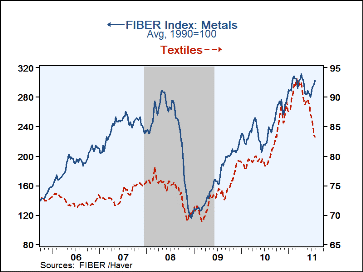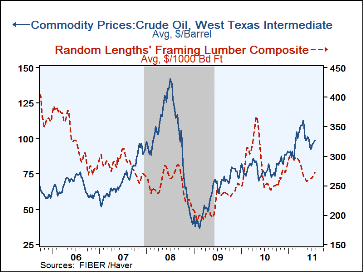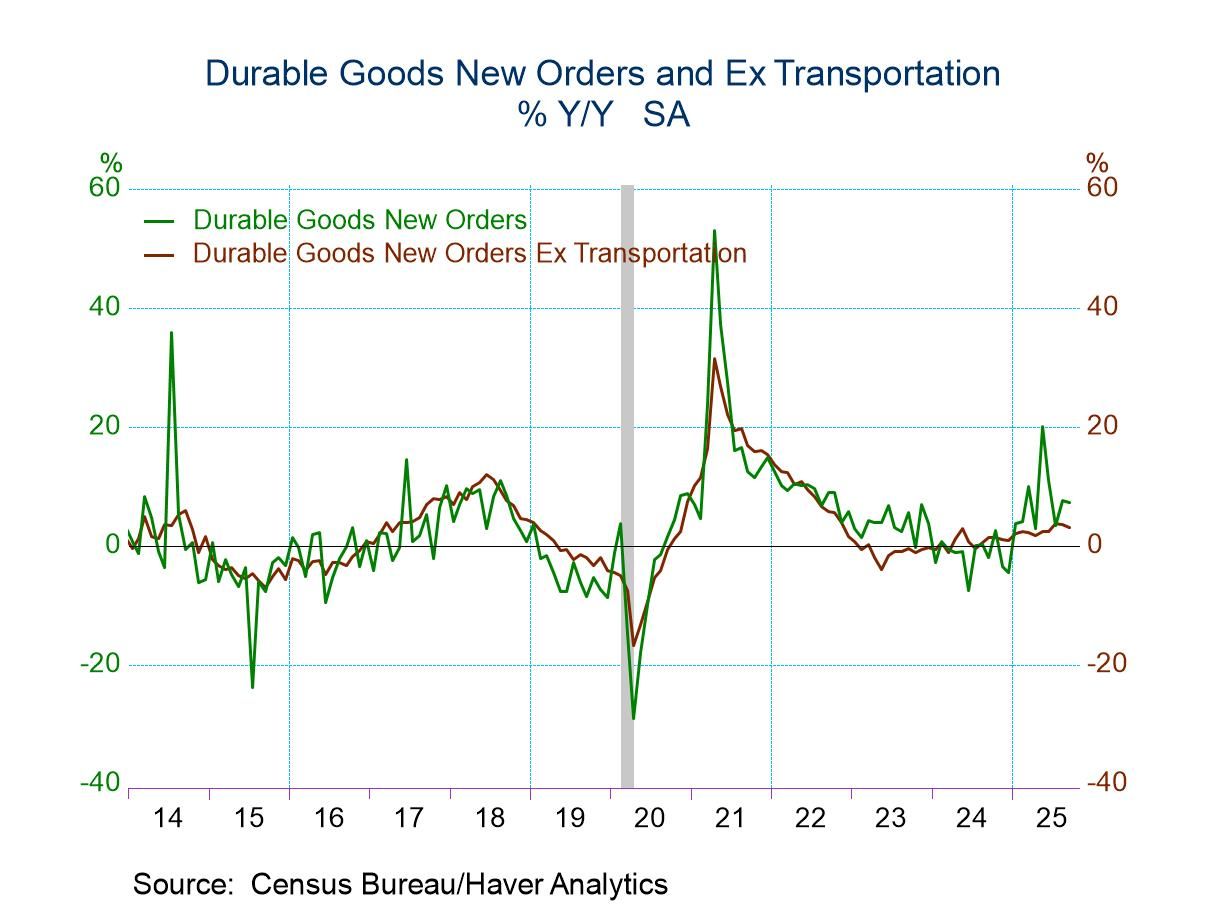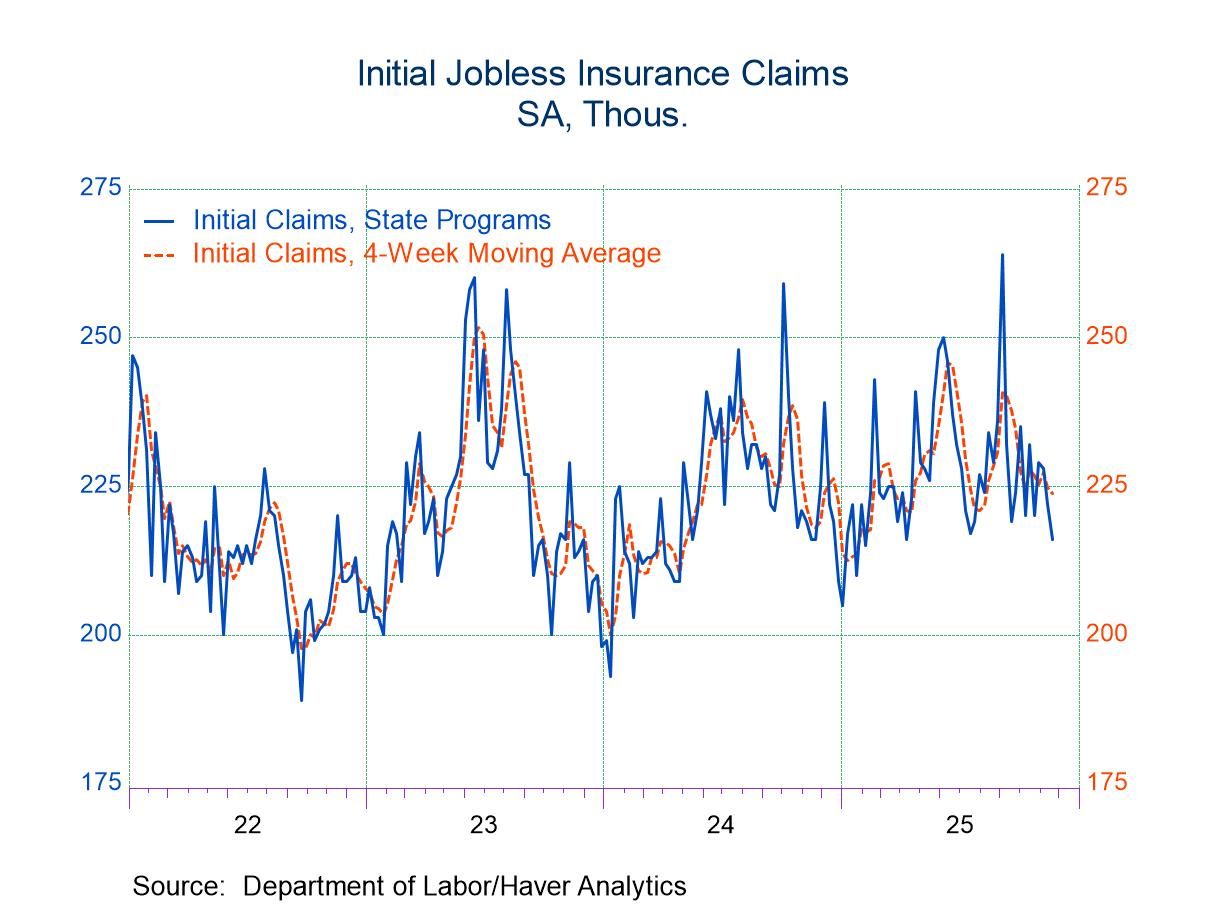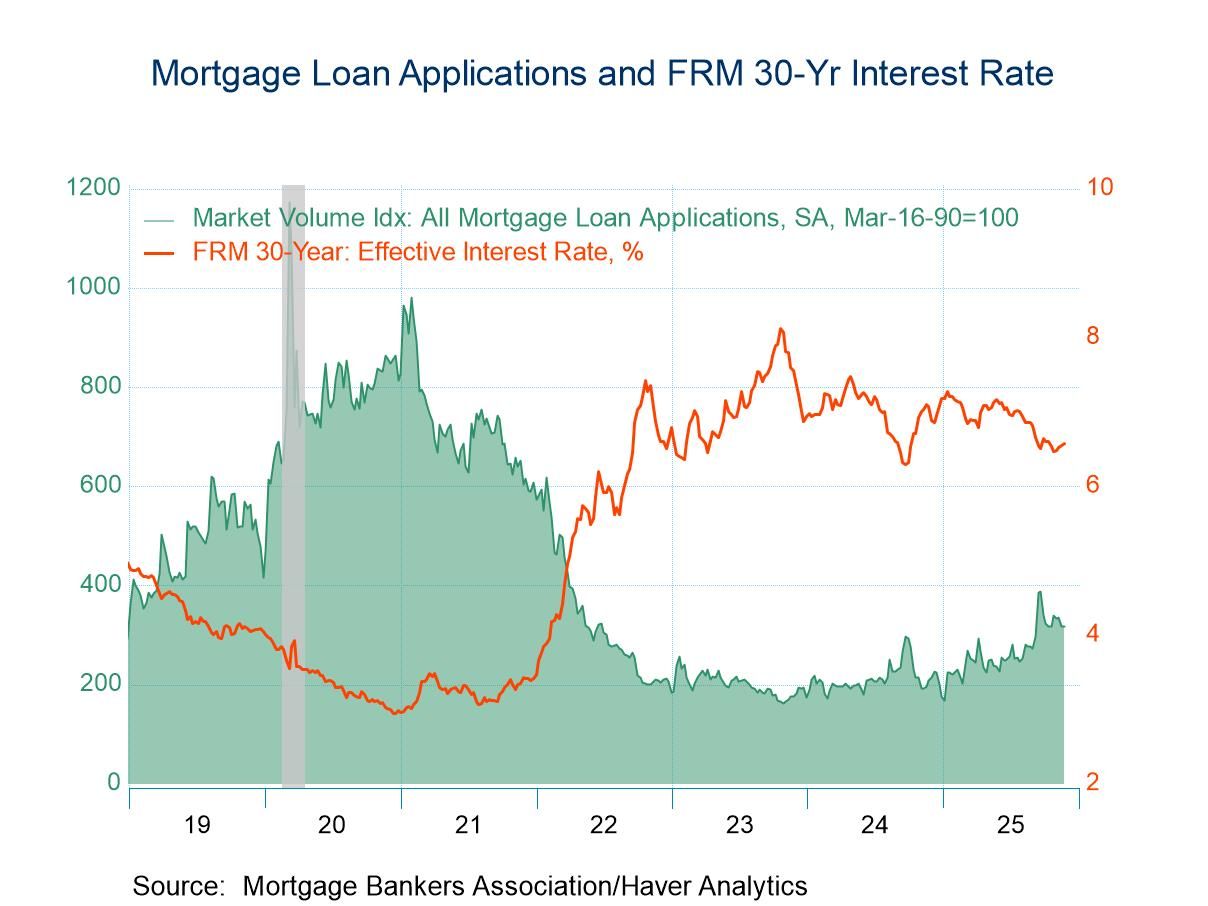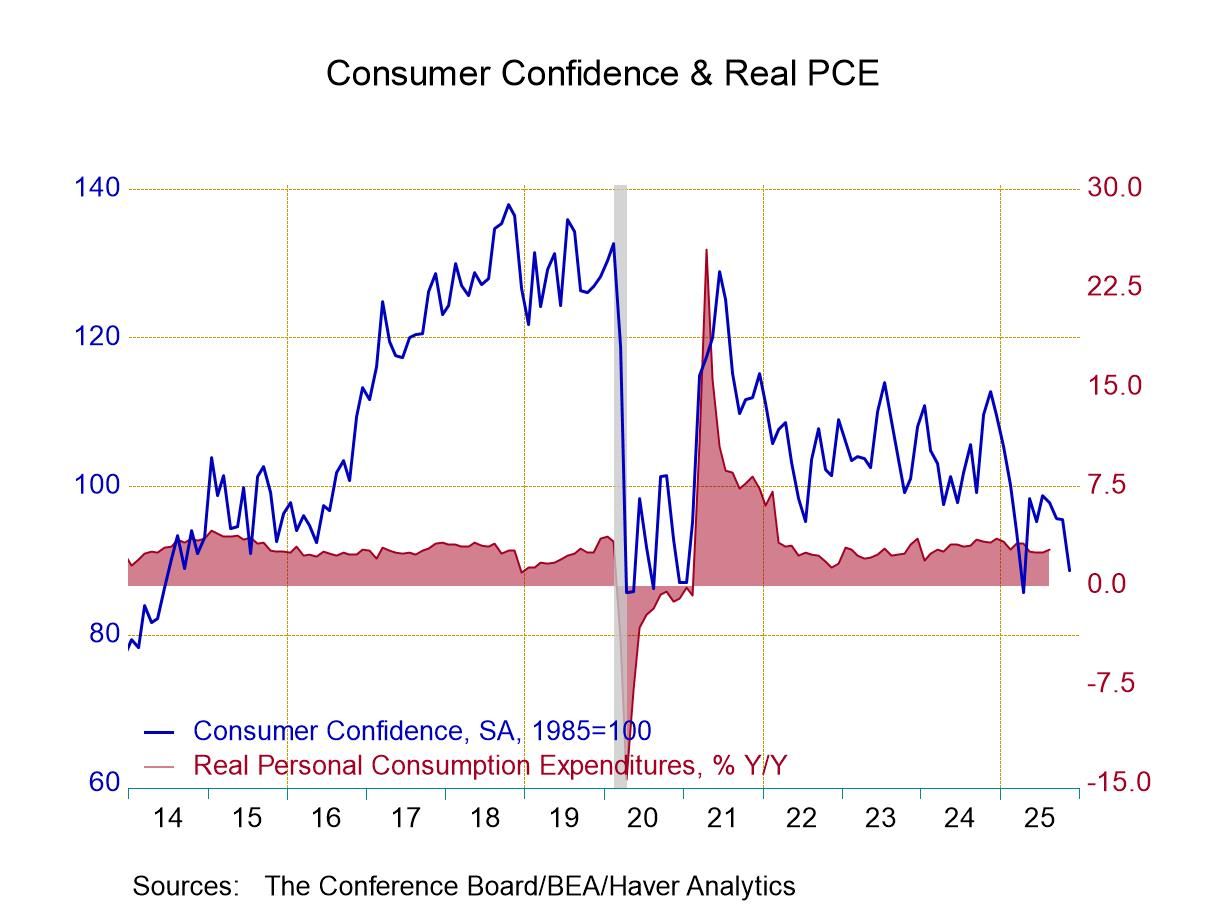 Global| Aug 01 2011
Global| Aug 01 2011FIBER: Commodity Prices Suggest Lackluster Economy
by:Tom Moeller
|in:Economy in Brief
Summary
On balance, industrial commodity prices have been moving sideways since the spring. At 174.8, the latest price index reading from the Foundation for International Business and Economic Research (FIBER), which covers industrial [...]
On balance, industrial commodity prices have been moving sideways since the spring. At 174.8, the latest price index reading from the Foundation for International Business and Economic Research (FIBER), which covers industrial materials prices, is just slightly below where it was in May. That sideways movement is consistent with the recent weakness in industrial output. Three-month growth in industrial materials output has been zero versus 5% growth in Q1. The weakness does not, however, suggest that prices are low or that output has fallen. The overall level of the FIBER index is up by three-quarters from its recession low. In conjunction, industrial output is up 13% from its nadir.
 The weakest of the FIBER subgroups recently has been textiles
where the index has been ranging 11% below last March. The figure has been
led lower by a halving of cotton prices. That has occurred despite a
modest gain in textiles' output. Lower prices in the crude oil &
benzene group follow with an 8% decline as crude oil prices have
ranged near $97.00 versus the spring, 2011 peak of $113.93. Finally,
prices in the miscellaneous group have fallen a similar 8%, led
lower by declines in natural rubber which recently have recovered
modestly. Also in this group are lumber prices where weakness in the
housing market caused a 10% price decline since the spring. Recently,
however, there has been a modest price recovery. Bucking the downward
trend have been prices in the metals group. Here, the index has
stabilized since the spring after more-than doubling the recession low.
Prices for copper scrap rose by four times during the period as did steel
scrap prices. Lead, zinc and aluminum prices doubled.
The weakest of the FIBER subgroups recently has been textiles
where the index has been ranging 11% below last March. The figure has been
led lower by a halving of cotton prices. That has occurred despite a
modest gain in textiles' output. Lower prices in the crude oil &
benzene group follow with an 8% decline as crude oil prices have
ranged near $97.00 versus the spring, 2011 peak of $113.93. Finally,
prices in the miscellaneous group have fallen a similar 8%, led
lower by declines in natural rubber which recently have recovered
modestly. Also in this group are lumber prices where weakness in the
housing market caused a 10% price decline since the spring. Recently,
however, there has been a modest price recovery. Bucking the downward
trend have been prices in the metals group. Here, the index has
stabilized since the spring after more-than doubling the recession low.
Prices for copper scrap rose by four times during the period as did steel
scrap prices. Lead, zinc and aluminum prices doubled.
Overall, prices for industrial materials should be characterized as a coincident indicator of the economy. As such, the recent sideways movement in industrial output goes a long way in explaining the plateau in industrial prices. Since they're logged every day, industrial prices do give a "real time" indication of economic conditions. Recently, these soft indications stand in contrast to earlier strength. They do not signal, however, that a recession already has been entered.
Commodity price data can be found in Haver's DAILY, WEEKLY, USECON and CMDTY databases.
| FIBER Industrial Materials Price Index (1990=100) | Latest | Latest Y/Y | 2010 | 2009 | 2008 |
|---|---|---|---|---|---|
| All Items | 174.8 | 13.3% | 158 | 121 | 149 |
| Textiles | 83.2 | 10.1 | 81 | 73 | 74 |
| Cotton (cents per pound) | 131.4 | 72.1 | 87.8 | 52.5 | 58.0 |
| Metals | 302.5 | 30.9 | 240 | 168 | 233 |
| Aluminum ($ per metric ton) | 2,508 | 30.1 | 2,172 | 1,662 | 2,571 |
| Copper Scrap (cents per pound) | 421.9 | 46.4 | 327 | 197 | 280 |
| Steel Scrap ($ per ton) | 416.7 | 28.3 | 326 | 204 | 350 |
| Crude Oil & Benzene | 201.7 | 9.7 | 182 | 151 | 200 |
| Crude Oil ($ per Barrel) | 94.94 | 31.6 | 79.43 | 61.71 | 99.73 |
| Miscellaneous | 187.9 | 7.2 | 179 | 128 | 159 |
| Natural Rubber (cents per pound) | 241.2 | 27.5 | 182 | 84 | 124 |
| Framing Lumber ($ per 1000 board) | 262 | 6.1 | 283 | 221 | 253 |
FIBER is the Foundation for International Business & Economic Research
Tom Moeller
AuthorMore in Author Profile »Prior to joining Haver Analytics in 2000, Mr. Moeller worked as the Economist at Chancellor Capital Management from 1985 to 1999. There, he developed comprehensive economic forecasts and interpreted economic data for equity and fixed income portfolio managers. Also at Chancellor, Mr. Moeller worked as an equity analyst and was responsible for researching and rating companies in the economically sensitive automobile and housing industries for investment in Chancellor’s equity portfolio. Prior to joining Chancellor, Mr. Moeller was an Economist at Citibank from 1979 to 1984. He also analyzed pricing behavior in the metals industry for the Council on Wage and Price Stability in Washington, D.C. In 1999, Mr. Moeller received the award for most accurate forecast from the Forecasters' Club of New York. From 1990 to 1992 he was President of the New York Association for Business Economists. Mr. Moeller earned an M.B.A. in Finance from Fordham University, where he graduated in 1987. He holds a Bachelor of Arts in Economics from George Washington University.



